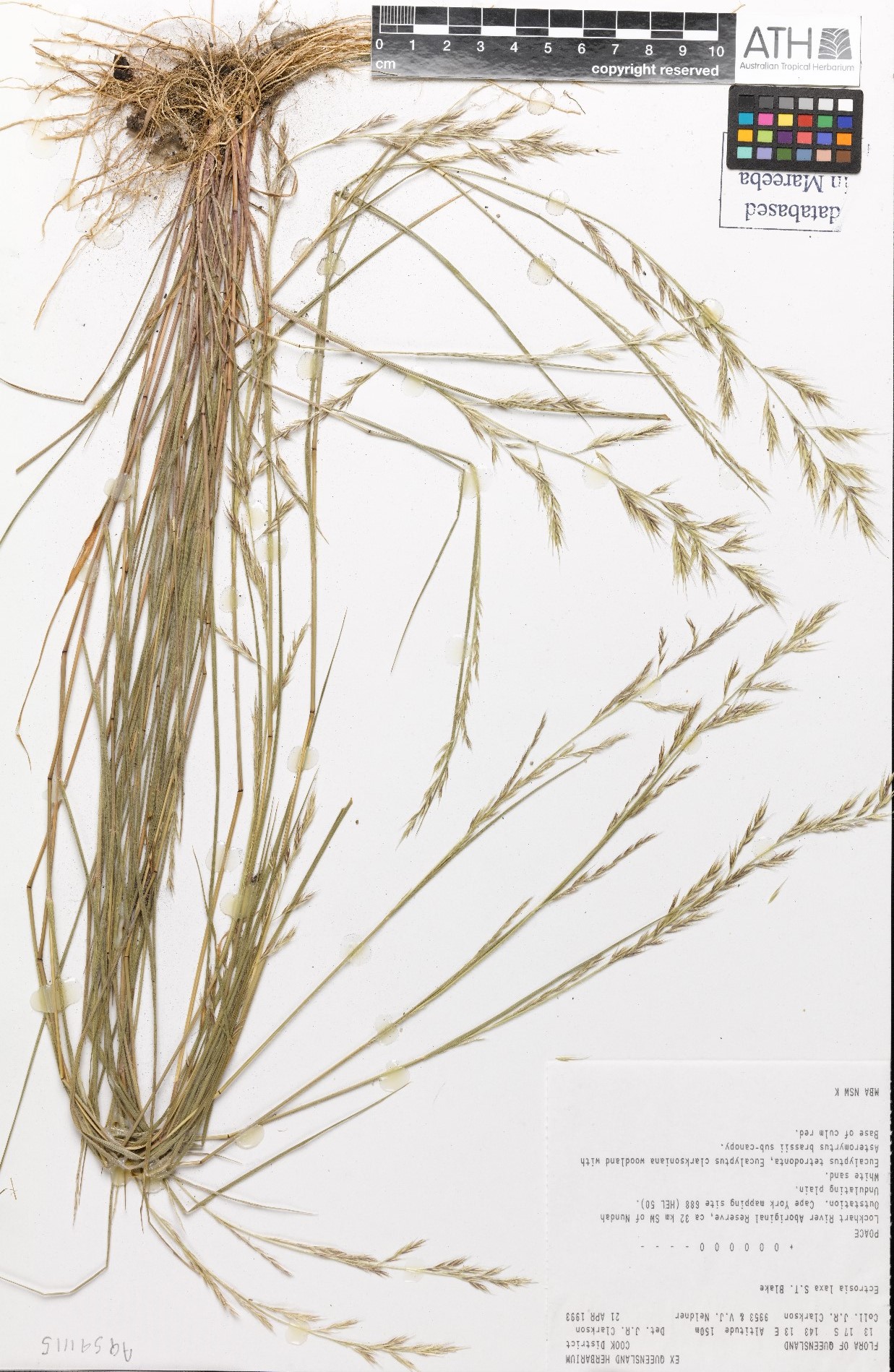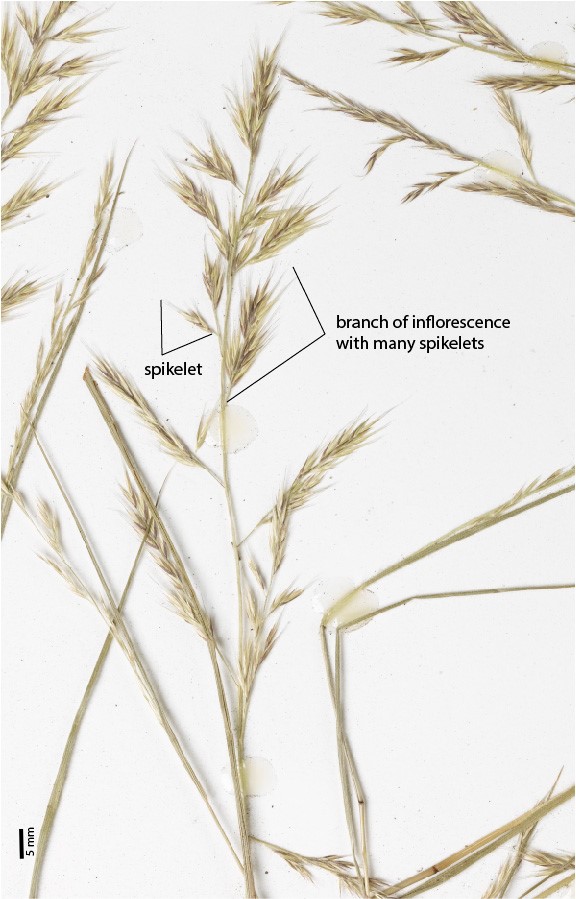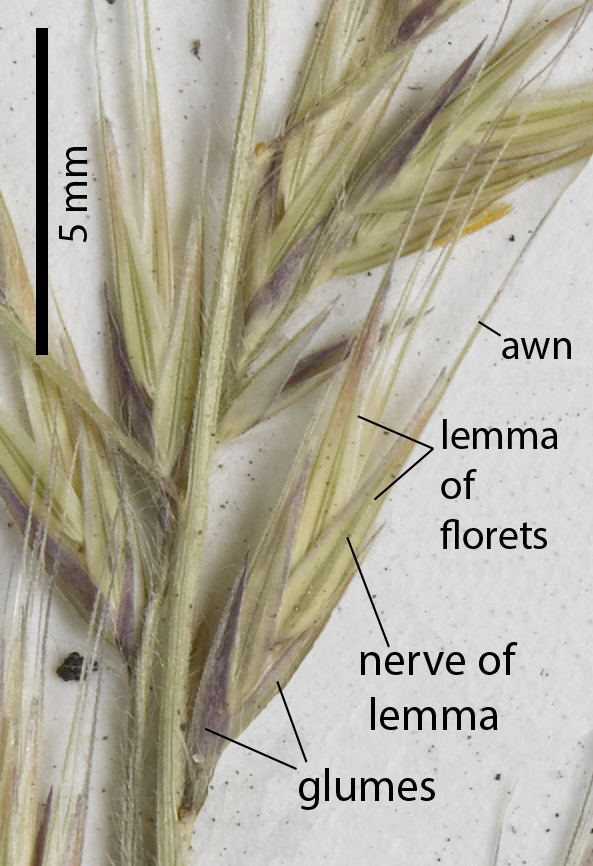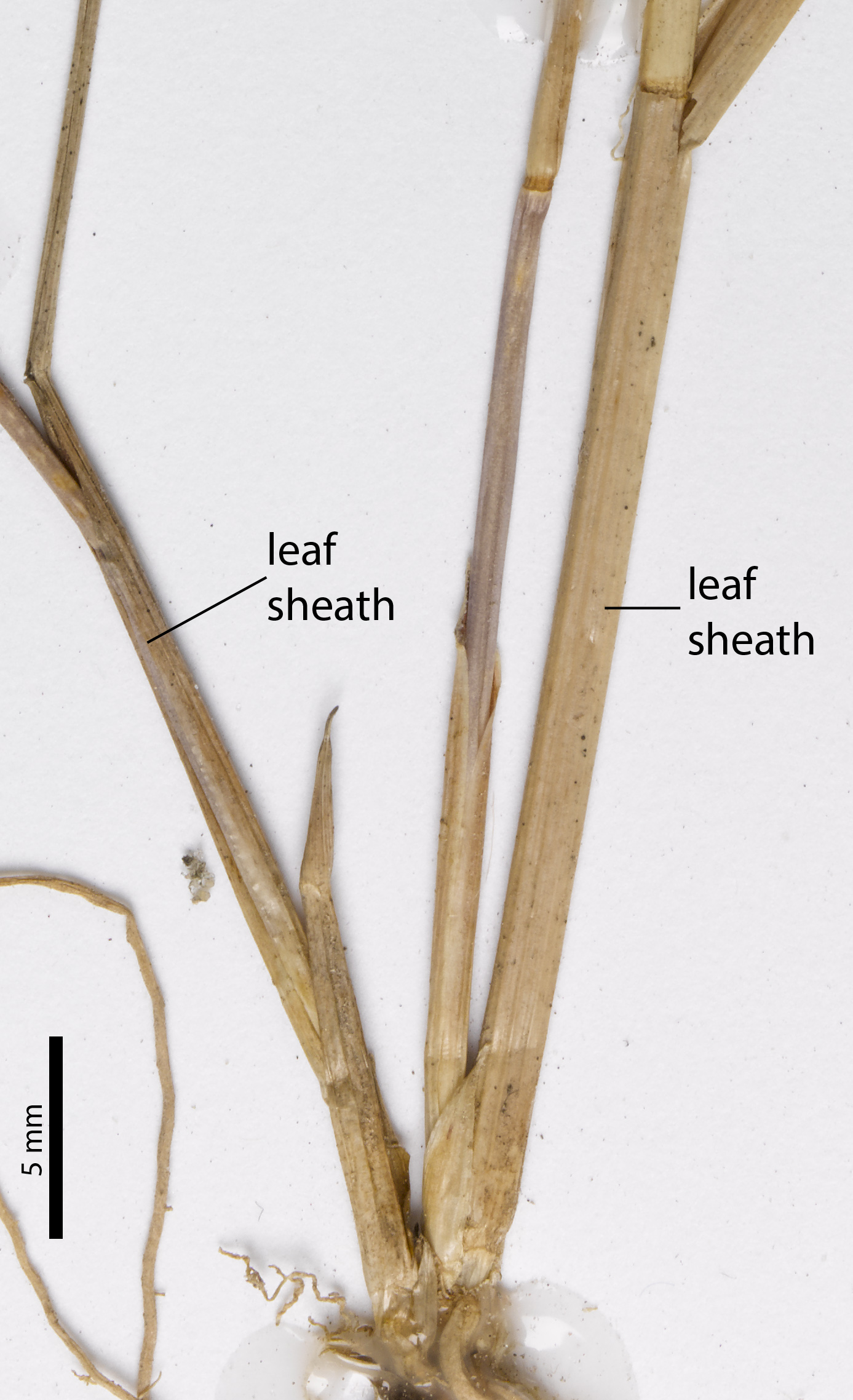Ectrosia laxa
S.T.Blake
This species is not widely collected across Cape York Peninsula (CYP). As an annual species it is unlikely to persist beyond the early dry season unless in moist situations. Plants stand up to 40-60 cm high when flowering (Fig. 1). Leaves arise from the base and along the stems with leaf blades 0.8 to 2.8 mm wide. The leaf sheath, that part of the leaf which clasps the flowering stem, and the leaf blade are variously clothed in long spreading hairs (Fig. 2). The basic flowering units or spikelets are arranged singly along a central stem or along branches arising from a central stem (Fig. 3). The spikelets arise from the flowering stem well above the leaves, and are spaced close together along the branch or overlap, although do not appear as congested (as in Ectrosia leporina). Spikelets are less than 12 mm long in length (excluding awns) with a length to width ratio (l:w) of greater than 4 (excluding awns). The spikelets are held at a spreading angle from the stem, ranging from an acute angle to reflexed (held backwards) (Fig. 3), rarely occuring appressed (held parallel to the stem). Each spikelet contains 6-11 florets (modified grass flowers) which overlap (Fig. 4), the spikelets are laterally compressed, i.e. flattened along their sides, and are usually purple tinged, although sometimes only at the base of the spikelet. The lemma, the dominant visible structure of the floret (Fig. 4) is 3 nerved, usually visible in fresh material as distinct green stripes, and sometimes purple-tinged. The lemma tapers into a distinct awn/bristle giving the tip of the spikelet a spiky appearance.
Botanical Description (ATH)
Annual. Flowering culms 40-60 cm high, slender, erect. Leaf sheaths pilose to hispid, leaf blades 0.8-2.8 mm wide, pilose to hirsute. Inflorescence an open panicle, 7-15 cm long, 6 cm wide, spikelets overlapping or close together, spreading to reflexed. Spikelets of 6-11 overlapping florets, spikelets 7-11 mm long, 1.3-1.9 mm wide, l:w greater than 4. Glumes paired at based of spikelet, lower glume 1.7-3.7 mm long, upper glume 2.8-4.4 mm long (Fig. 4). Basal lemmas 3.2-6 mm long, with tapered awn up to 2-4.7 mm long (Fig. 4), lemma awns longer on upper florets.
Diagnostic Features (ATH)
As a general guide Ectrosia species are usually purple tinged, have awned lemmas and do not grow above 60 cm (around or just above knee height). This species, however, can be difficult to distinguish from a number of other species in the genus and accurate identification will usually require both access to magnification tools to see diagnostic characters as well as comparison against specimens which have had their identification confirmed by an expert. For more detailed descriptions of this species and identification keys for the genus please refer to Nightingale et al. (2005) or Simon & Alfonso (2011). Ectrosia laxa is most similar to Ectrosia ovata (Fig. 5 & 6) and Ectrosia appressa (Fig. 7 & 8). Characters for distinguishing between E. laxa and E. ovata include the hairiness of the leaf sheath, and the lemma and spikelet shape. Leaf sheaths are hairy in E. laxa (Fig. 2) but are hairless in E. ovata (Fig. 6). Lemmas and awns diverge at the tip of the spikelet in E. laxa (Fig. 4) and run parallel in E. ovata (Fig. 5), but this character can be difficult to determine without the alternate state to compare with. The key difference between E. laxa and E. appressa (Fig. 7) appears to be orientation of the spikelet on the flowering stem, appressed (held parallel to flowering stem) in E. appressa versus spreading (held at acute to right angles from stem) in E. laxa, and the absence of an awn on the basal lemma in E. appressa (Fig. 8). Currently E. appressa is only known from one locality and further material is required to clarify the differences between the species.
Natural Values (CYNRM, ATH, others).
Habitat
Recorded from the eastern half of Cape York Peninsula (Fig. 9) and the northern part of the Northern Territory (NT). Occurs in sandy depressions and on river banks, in forests and woodlands mainly dominated by Eucalyptus species (Simon & Alfonso 2011).







Resources
Resources:
AVH (2018) Australia’s Virtual Herbarium, Council of Heads of Australasian Herbaria, <http://avh.chah.org.au>, accessed 8 Feb 2018.
Nightingale, M.E. & Weiller, C.M. in Mallett, K. (ed.) (2005), Ectrosia. Flora of Australia 44B: 438-439, Fig. 66B-C
Simon, B.K. & Alfonso, Y. (2011) AusGrass2, http://ausgrass2.myspecies.info/accessed on [8 February 2018].

